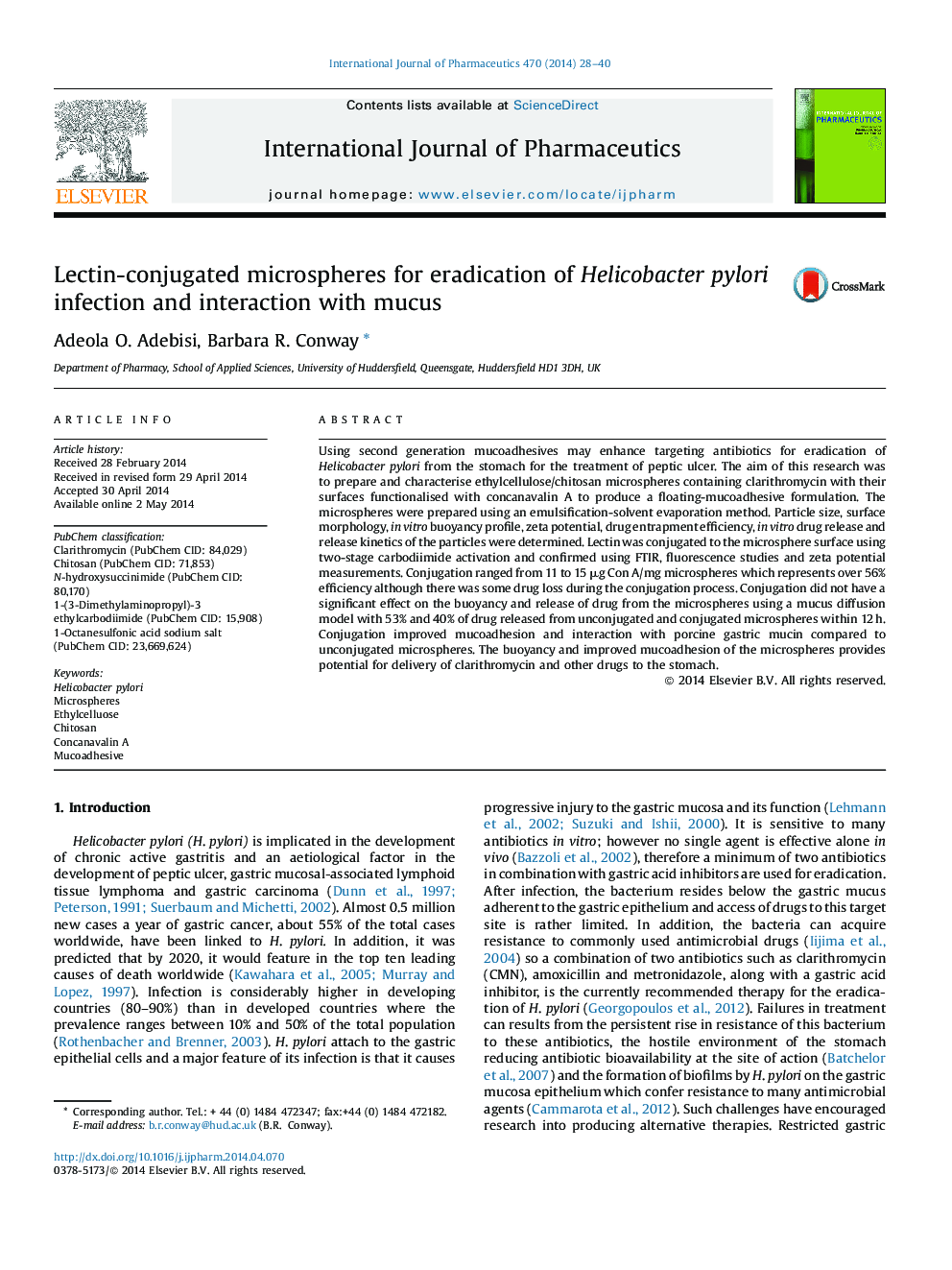| Article ID | Journal | Published Year | Pages | File Type |
|---|---|---|---|---|
| 2501821 | International Journal of Pharmaceutics | 2014 | 13 Pages |
Using second generation mucoadhesives may enhance targeting antibiotics for eradication of Helicobacter pylori from the stomach for the treatment of peptic ulcer. The aim of this research was to prepare and characterise ethylcellulose/chitosan microspheres containing clarithromycin with their surfaces functionalised with concanavalin A to produce a floating-mucoadhesive formulation. The microspheres were prepared using an emulsification-solvent evaporation method. Particle size, surface morphology, in vitro buoyancy profile, zeta potential, drug entrapment efficiency, in vitro drug release and release kinetics of the particles were determined. Lectin was conjugated to the microsphere surface using two-stage carbodiimide activation and confirmed using FTIR, fluorescence studies and zeta potential measurements. Conjugation ranged from 11 to 15 μg Con A/mg microspheres which represents over 56% efficiency although there was some drug loss during the conjugation process. Conjugation did not have a significant effect on the buoyancy and release of drug from the microspheres using a mucus diffusion model with 53% and 40% of drug released from unconjugated and conjugated microspheres within 12 h. Conjugation improved mucoadhesion and interaction with porcine gastric mucin compared to unconjugated microspheres. The buoyancy and improved mucoadhesion of the microspheres provides potential for delivery of clarithromycin and other drugs to the stomach.
Graphical abstractFigure optionsDownload full-size imageDownload high-quality image (80 K)Download as PowerPoint slide
